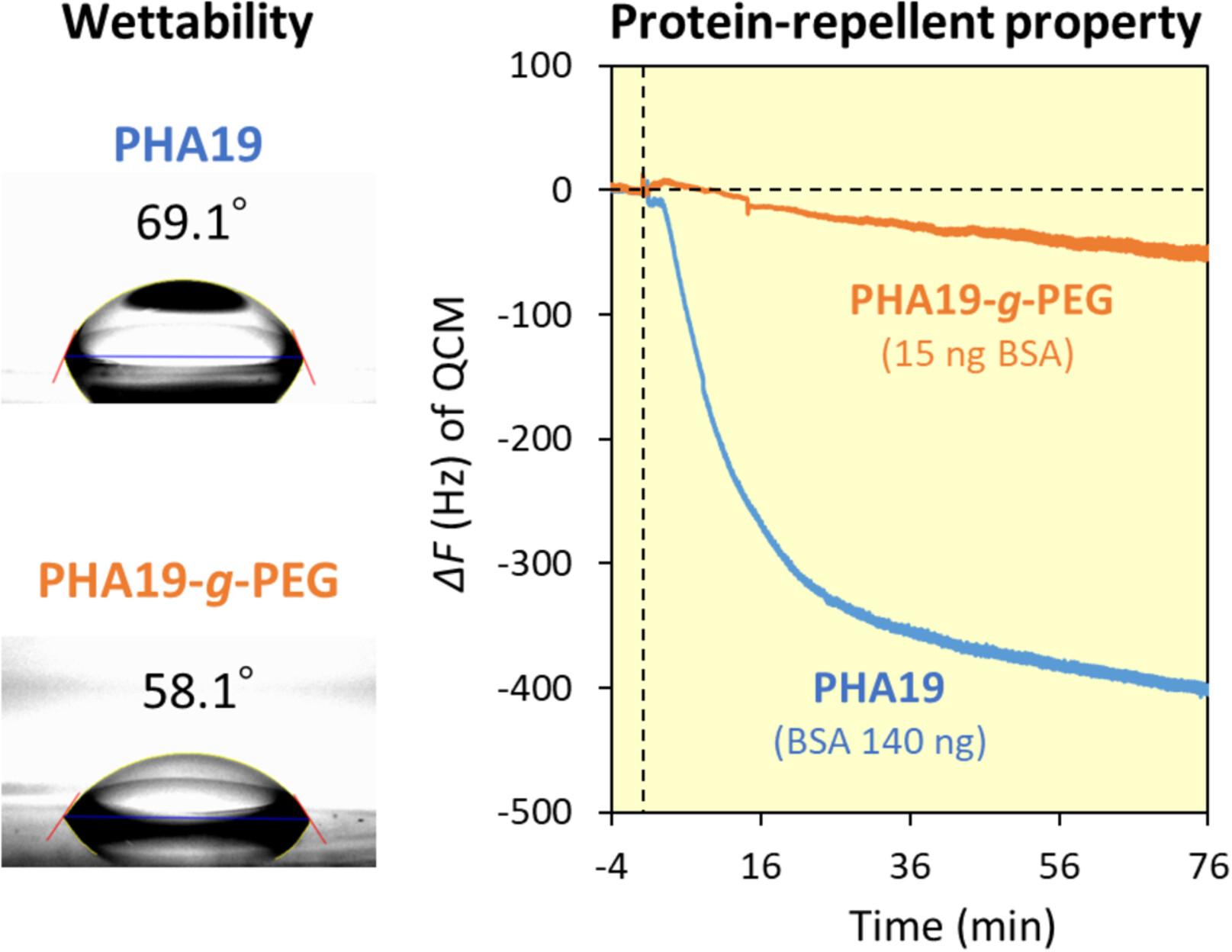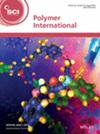Yuki Miyahara, Ayata Nakagawa, Yusuke Nakata, Christopher T. Nomura, Takeharu Tsuge
求助PDF
{"title":"Polyethylene glycol grafting by thiol-ene reaction for the chemical modification of polyhydroxyalkanoates","authors":"Yuki Miyahara, Ayata Nakagawa, Yusuke Nakata, Christopher T. Nomura, Takeharu Tsuge","doi":"10.1002/pi.6747","DOIUrl":null,"url":null,"abstract":"<p>Polyhydroxyalkanoates (PHAs) are biodegradable thermoplastics synthesized from renewable biomass resources by various microbes. They have garnered significant attention owing to their superior biodegradability in natural environments compared to other biodegradable plastics. However, preserving their properties while preventing biodegradation during use as plastic material is crucial. In this study, polyethylene glycol (PEG)-grafted PHAs were investigated for the development of biodegradable materials with controlled surface properties. To this end, PHA copolymers containing 6–19 mol% of 3-hydroxy-4-pentenoate (3H4PE), which features an unsaturated side chain as a site for chemical modification, were synthesized using recombinant <i>Escherichia coli</i> and 4-pentenoic acid as 3H4PE precursors. Thiol-PEG (MW 2000) was then grafted onto the PHA at the unsaturated side chain via thiol-ene ‘click’ chemistry reactions. Although the thermal properties of the PEG-grafted PHA showed minimal changes compared with those of the unmodified PHA copolymers, the PEG-grafted PHA films exhibited increased wettability and excellent protein-repellent properties. Furthermore, when biodegradability was tested on an agar plate containing PEG-grafted PHA, the PHA-degrading bacteria did not form clear zones around their colonies when the PEG content was 12 wt%. These results suggest that PEG grafting effectively alters the properties of PHA, offering a promising strategy for controlling its biodegradability and its thermal and antifouling properties. © 2025 Society of Chemical Industry.</p>","PeriodicalId":20404,"journal":{"name":"Polymer International","volume":"74 10","pages":"888-897"},"PeriodicalIF":3.6000,"publicationDate":"2025-01-21","publicationTypes":"Journal Article","fieldsOfStudy":null,"isOpenAccess":false,"openAccessPdf":"","citationCount":"0","resultStr":null,"platform":"Semanticscholar","paperid":null,"PeriodicalName":"Polymer International","FirstCategoryId":"92","ListUrlMain":"https://scijournals.onlinelibrary.wiley.com/doi/10.1002/pi.6747","RegionNum":4,"RegionCategory":"化学","ArticlePicture":[],"TitleCN":null,"AbstractTextCN":null,"PMCID":null,"EPubDate":"","PubModel":"","JCR":"Q2","JCRName":"POLYMER SCIENCE","Score":null,"Total":0}
引用次数: 0
引用
批量引用
Abstract
Polyhydroxyalkanoates (PHAs) are biodegradable thermoplastics synthesized from renewable biomass resources by various microbes. They have garnered significant attention owing to their superior biodegradability in natural environments compared to other biodegradable plastics. However, preserving their properties while preventing biodegradation during use as plastic material is crucial. In this study, polyethylene glycol (PEG)-grafted PHAs were investigated for the development of biodegradable materials with controlled surface properties. To this end, PHA copolymers containing 6–19 mol% of 3-hydroxy-4-pentenoate (3H4PE), which features an unsaturated side chain as a site for chemical modification, were synthesized using recombinant Escherichia coli and 4-pentenoic acid as 3H4PE precursors. Thiol-PEG (MW 2000) was then grafted onto the PHA at the unsaturated side chain via thiol-ene ‘click’ chemistry reactions. Although the thermal properties of the PEG-grafted PHA showed minimal changes compared with those of the unmodified PHA copolymers, the PEG-grafted PHA films exhibited increased wettability and excellent protein-repellent properties. Furthermore, when biodegradability was tested on an agar plate containing PEG-grafted PHA, the PHA-degrading bacteria did not form clear zones around their colonies when the PEG content was 12 wt%. These results suggest that PEG grafting effectively alters the properties of PHA, offering a promising strategy for controlling its biodegradability and its thermal and antifouling properties. © 2025 Society of Chemical Industry.
巯基反应接枝聚乙二醇对聚羟基烷酸酯的化学改性
聚羟基烷酸酯(PHAs)是由可再生生物质资源通过多种微生物合成的可生物降解的热塑性塑料。与其他生物降解塑料相比,它们在自然环境中具有优越的生物降解性,因此受到了极大的关注。然而,在作为塑料材料使用的过程中,保持它们的特性同时防止生物降解是至关重要的。本研究以聚乙二醇(PEG)接枝pha为研究对象,开发具有可控表面性能的可生物降解材料。为此,以重组大肠杆菌和4-戊烯酸为3H4PE前体,合成了含有6-19摩尔%以不饱和侧链为化学修饰位点的3-羟基-4-戊烯酸酯(3H4PE)的PHA共聚物。然后通过巯基“点击”化学反应将Thiol-PEG (MW 2000)接枝到PHA的不饱和侧链上。虽然与未改性的PHA共聚物相比,聚乙二醇接枝的PHA的热性能变化很小,但聚乙二醇接枝的PHA膜具有增加的润湿性和优异的蛋白质拒水性。此外,当在含有PEG嫁接PHA的琼脂板上测试生物降解性时,当PEG含量为12 wt%时,PHA降解细菌在其菌落周围没有形成清晰的区域。这些结果表明,聚乙二醇接枝可以有效地改变PHA的性质,为控制PHA的生物降解性、耐热性和防污性提供了一种有前途的策略。©2025化学工业协会。
本文章由计算机程序翻译,如有差异,请以英文原文为准。




 求助内容:
求助内容: 应助结果提醒方式:
应助结果提醒方式:


